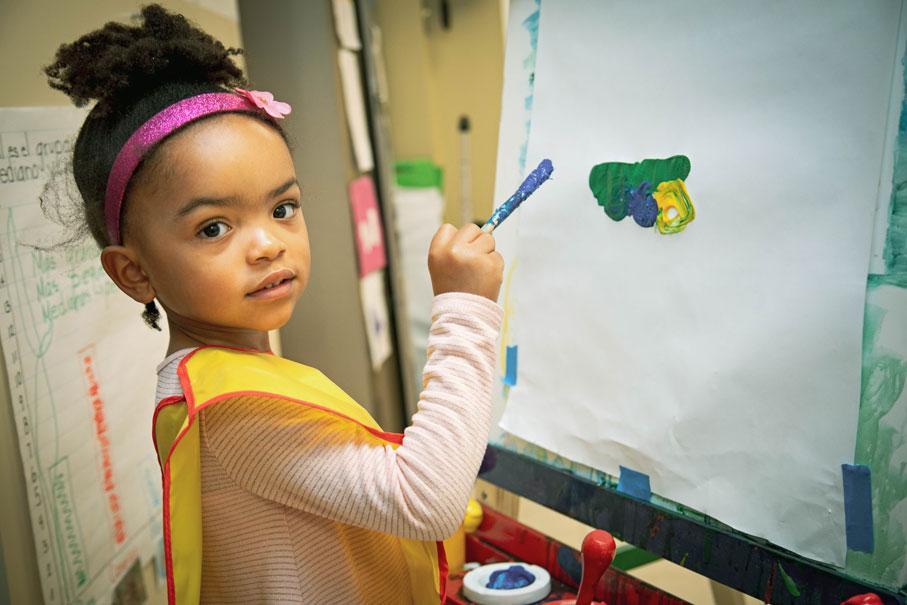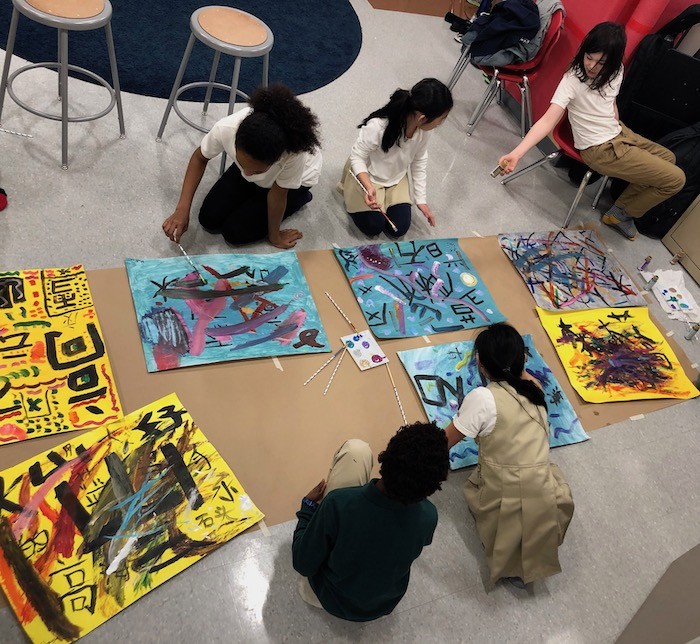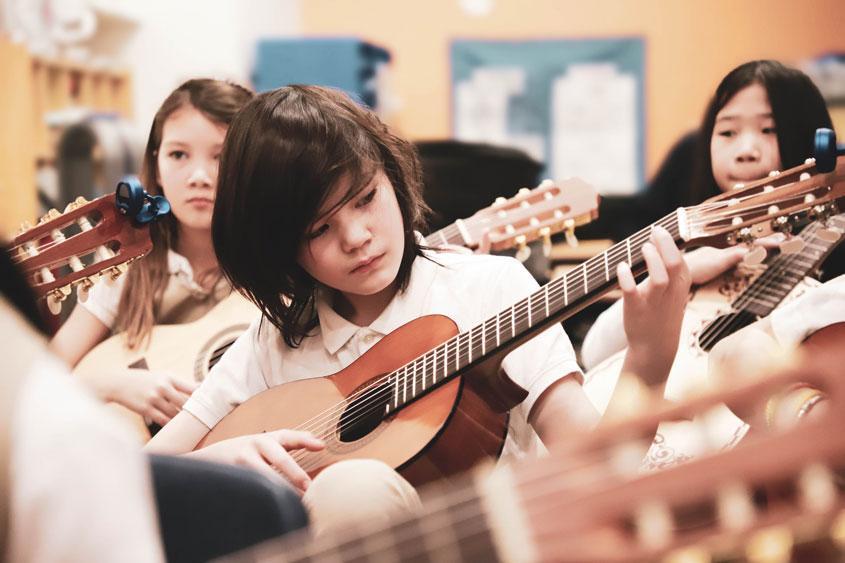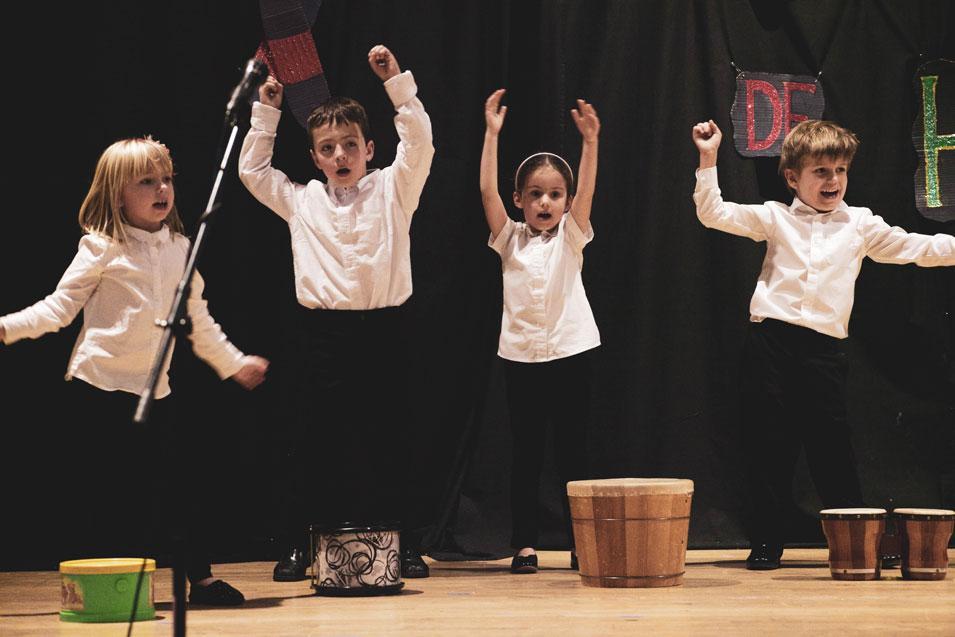Arts
Across all grade levels, the arts play a crucial role in our educational model and figure significantly into our interdisciplinary curriculum. At HudsonWay Immersion School (HWIS), we believe it is vitally important to encourage children from a very young age to express themselves artistically and to hone their tools of artistic expression. Art and music are meditative and therapeutic, and art objects and musical pieces have proved to be great unifiers of groups of people throughout history.
In our visual arts program, we encourage students to begin drawing very early and to use drawings as a way of conveying their thoughts and feelings. Children are not instructed on how to draw objects nor how to craft. For every project they undertake, they begin with their own concept and are encouraged to gradually reveal it through a series of drafts.


Beginning with preliminary sketches, and then a second draft, students finalize material lists and plan out every aspect of their projects before they embark on creating their final vision.
At HudsonWay, we regard observational drawing as a means of communication integral to social-emotional learning. Communication of this nature is essential for students to understand each other, explain themselves, and to navigate the world. To this end, it is important for our art students to begin to develop their artistic voices very early on. Art projects do not serve as a vehicle for instructors to force a lesson—they are considered invaluable in and of themselves. Arts curriculum is changed out every year so that students never repeat the same themes.
Every year, HWIS explores different artists from all over the world reviewing their work, learning about their techniques, and reviewing their quotes and writings. Recently, we explored the work of Chinese artist Ai Weiwei. Fred Sandback was our inspiration for a study online, and the artist Brice Marden’s Cold Mountain series led us to an exploration of Chinese poetry. Bill Viola and Paul Chan provided inspiration for the study of light and shadow.
Appreciating cultures through music
Our preschoolers acquire the vocabulary to acknowledge and interpret the sounds they hear and explore rhythm, melody, harmony, tone, form, and expression, using both traditional and “found” or made instruments. Both in the classroom and outdoors, students at HWIS enjoy a preschool music curriculum that encourages singing, playing, creating, and listening with opportunities for individual and group responses.
In the Elementary music program, students learn to express themselves through weekly musical experiences designed to enkindle an intrinsic motivation for music. With their developmental foundation in place, upper elementary levels are introduced to the guitar. At the beginning of each class, everybody sets up and tunes his or her guitar with a clip-on tuner. We guide the development of their muscle memory, the correct manner of plucking the strings, the right posture, and teach by showing and encouraging mimicry to help students develop a musical ear. At HudsonWay, we also teach via take-home videos, which are transmitted to parents through our parent portal.


A benefit of small class sizes, HudsonWay takes an individualized approach to teaching music, a tremendous advantage when accommodating a class of students who are developing in their studies at different paces. Also, HWIS can more effectively observe students’ development, and offer extra support where needed.
As a result, all students develop musicianship, acquire aural skills, learn how to sight-read in treble and bass clef, learn the system of music notation, study music theory concepts, develop practice skills and gain an appreciation of the music of many cultures, periods and genres.


